Porsche Design Honor Magic V2 RSR pushes the boundaries for foldable phones
The Porsche Design Honor Magic V2 RSR combines folding-phone technology with premium sports-car design heritage
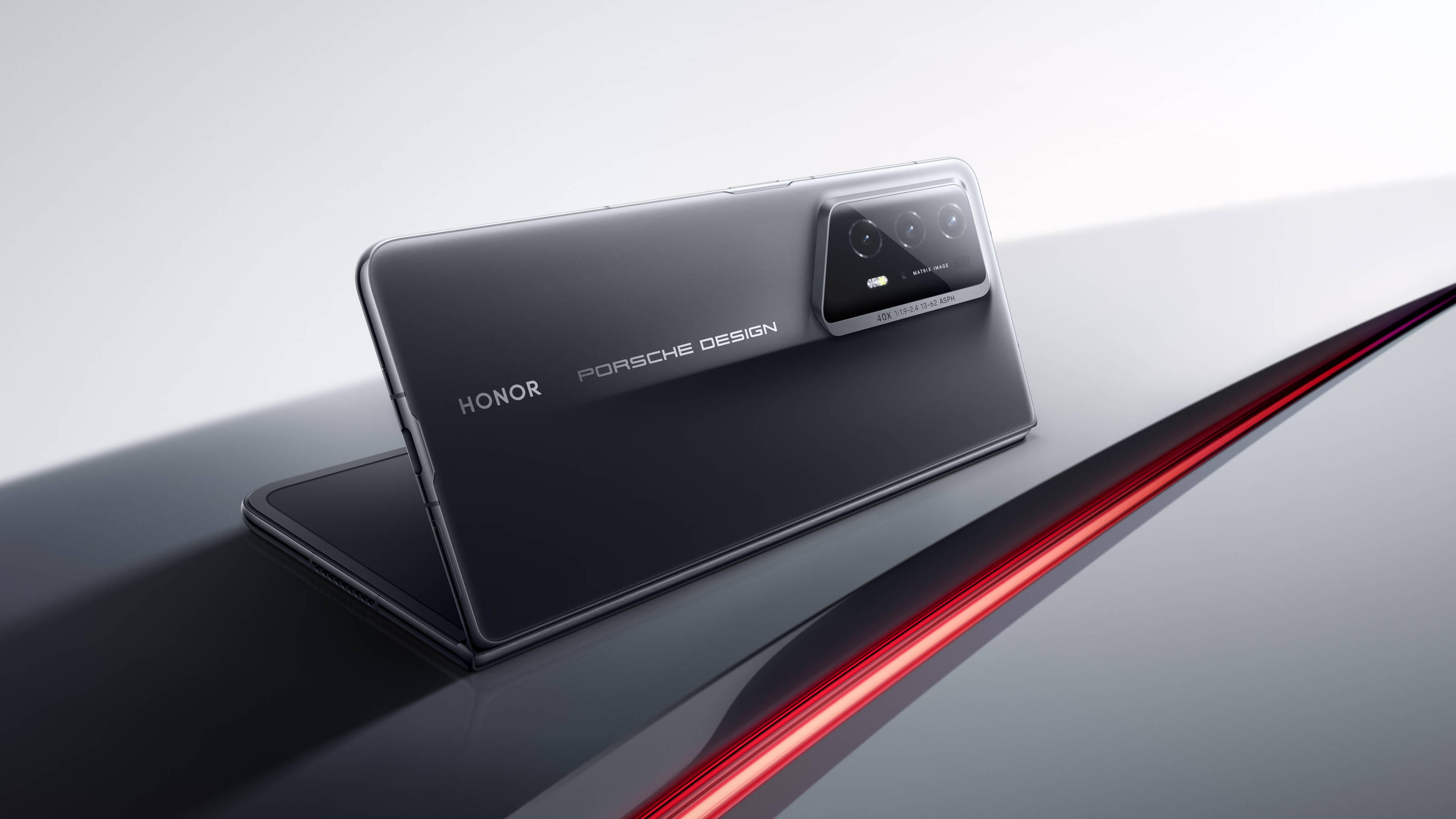
In partnership with Honor
Honor’s newest smartphone embodies the company’s forward-thinking approach to premium technology, a synthesis of dynamic software design and fresh thinking about how high-end design should look and feel. Working hand in hand with Porsche Design, the new PORSCHE DESIGN HONOR Magic V2 RSR takes Honor’s class-leading thin folding screen technology and gives it a sophisticated appearance evolved from Porsche’s acclaimed sports cars.
‘We’re always looking for equal partners that are a perfect fit, with shared customers,’ says Carsten Monnerjan, head of Design at Porsche Lifestyle Group, a subsidiary of the car manufacturer Porsche and the company behind the brand Porsche Design. Monnerjan leads a creative team at Studio FA Porsche in Zell am See, Austria, founded by and named after the creator of the Porsche 911. In recent years, the design studio has strengthened its collaborative work between its offices in Zell am See, Berlin, Los Angeles, Shanghai, and Ludwigsburg in Germany. There’s also a close synergy with the design studio led by the director of Style Porsche, Michael Mauer.
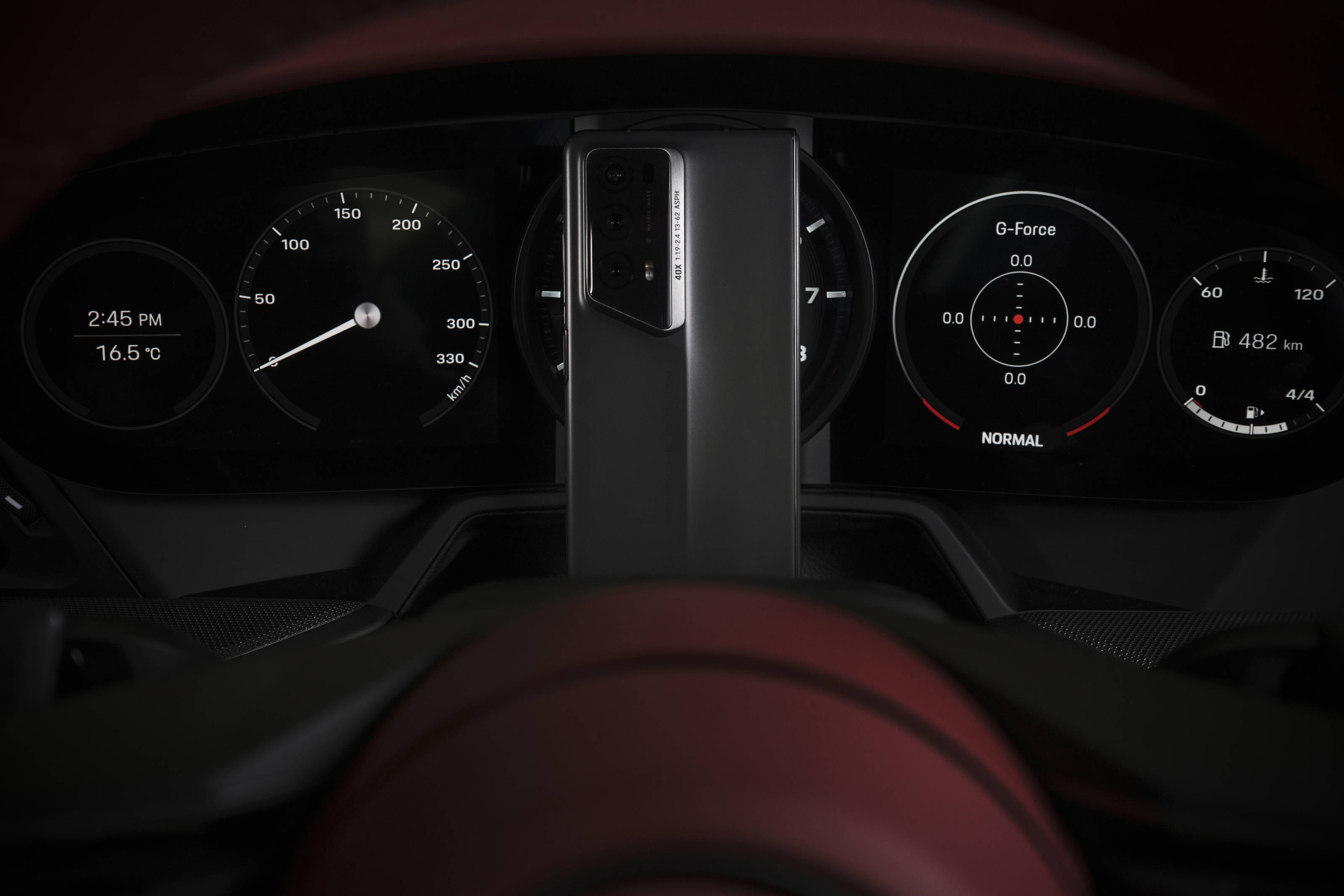
PORSCHE DESIGN HONOR Magic V2 RSR
For Honor, the partnership could not be more fitting. Yuan, chief designer at Honor, explains how the company is committed to openness and collaboration. ‘I think Honor and Porsche Design share the same vision to offer a range of high-end and innovative products that set industry benchmarks,’ he says. ‘We couldn’t find a better partner than Porsche Design – we’re both unafraid to rip up the rule book to chart our own path for new and exciting products.’
As an exclusive design and lifestyle brand, Porsche Design is committed to bringing the unique Porsche spirit and values to life. While Honor has established itself as a key player in the smartphone industry with human-centric innovations. This partnership is another best practice for Honor, as a global and premium brand, to bring collective innovations to consumers around the world.
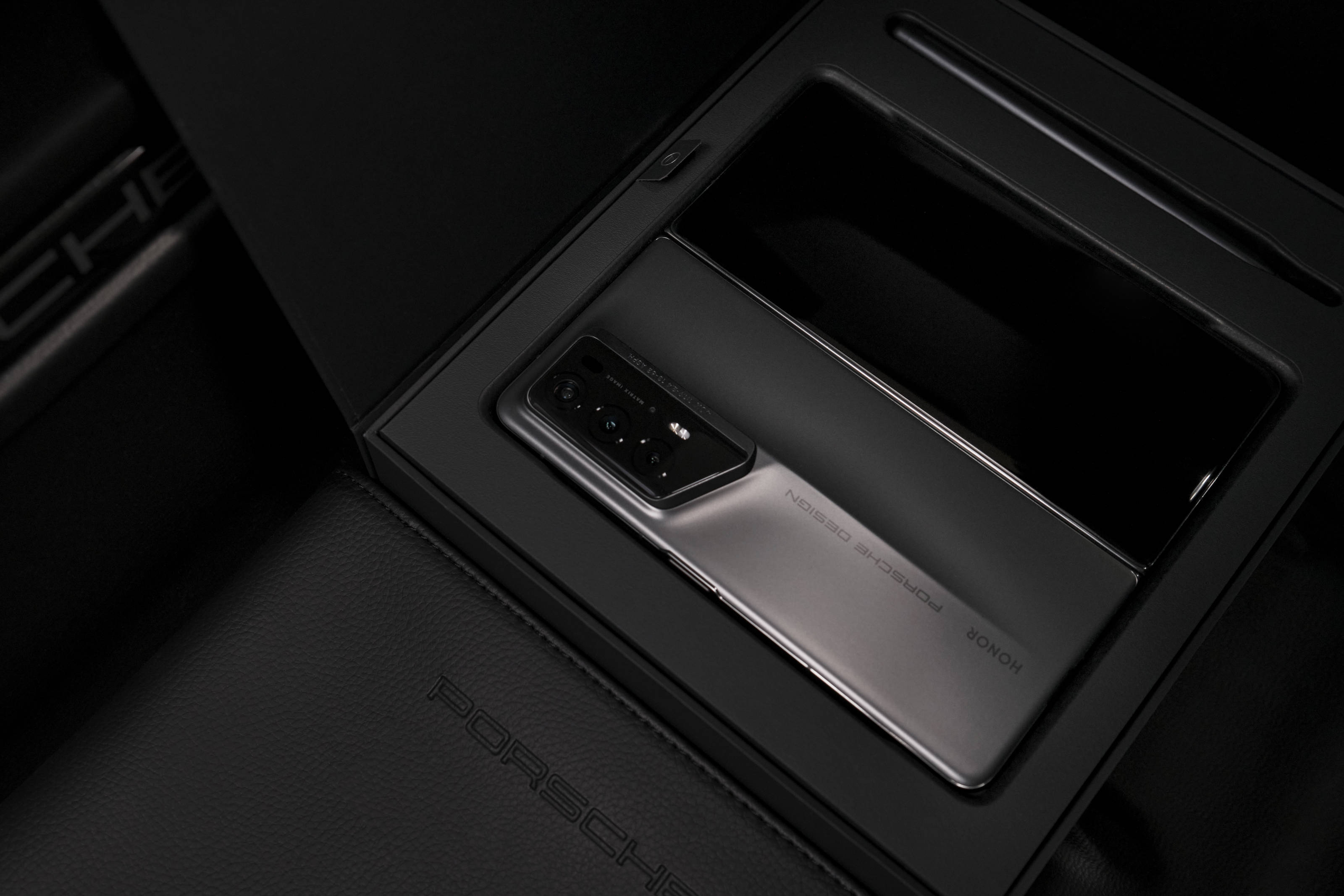
PORSCHE DESIGN HONOR Magic V2 RSR
‘A phone is in the hands of our customers,’ says Monnerjan. ‘They’re choosing it to be part of their user journey every day, something they use all the time. It’s a product that must never let you down, and be joyful to use.’ Monnerjan draws an analogy with Porsche’s luxury sports cars and SUVs. ‘They are products that make you proud to own them,’ he says, ‘and we are both pushing to find the latest technologies, materials and user interfaces to ensure this is the case.’

PORSCHE DESIGN HONOR Magic V2 RSR
Honor’s journey to the premium end of the smartphone market has been a rapid one. Weighing only 234g and measuring 9.9mm in thickness when folded, the PORSCHE DESIGN HONOR Magic V2 RSR pushes the boundaries of innovation for foldable devices. The device harnesses distinct sports car DNA, with a uniquely shaped camera lens enclosure that references the visual language of Porsche. This is translated into the physical feel of the device, not just its appearance. ‘It’s important not to make the shape or design too obvious,’ says Monnerjan. ‘What we are looking for is how to emphasise key features through the DNA of our form language. We do this through the feeling you have when you touch the phone and feel the shapes and textures.’
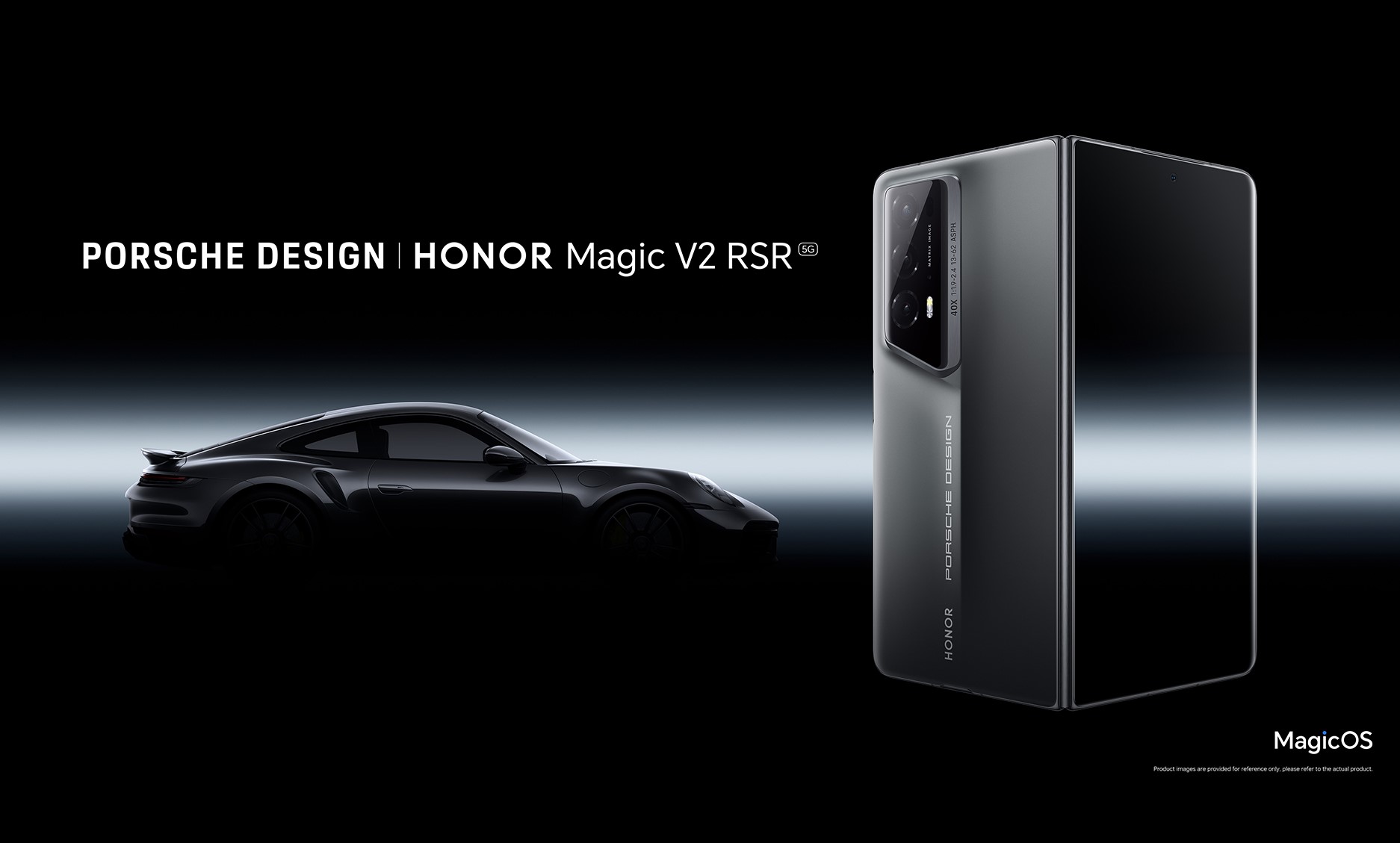
PORSCHE DESIGN HONOR Magic V2 RSR
Porsche Design has a long history of working in the smartphone segment, as well as a rich portfolio of luxury design. ‘Our brand looks back on more than 15 years of success in the smartphone business,’ says Monnerjan. ‘Our prestige and success stems from the timeless, functional, and purist design philosophy defined by Professor Ferdinand Alexander Porsche, who not only designed the legendary Porsche 911 but also created the world’s first all-black wristwatch, the Chronograph 1 from 1972.’
This heritage of meticulous simplicity is perfectly applied to the PORSCHE DESIGN HONOR Magic V2 RSR. ‘Our philosophy is that every product has to be unadorned, useful, and reduced to the essentials,’ Monnerjan explains. ‘There should be nothing excessive on the product.’
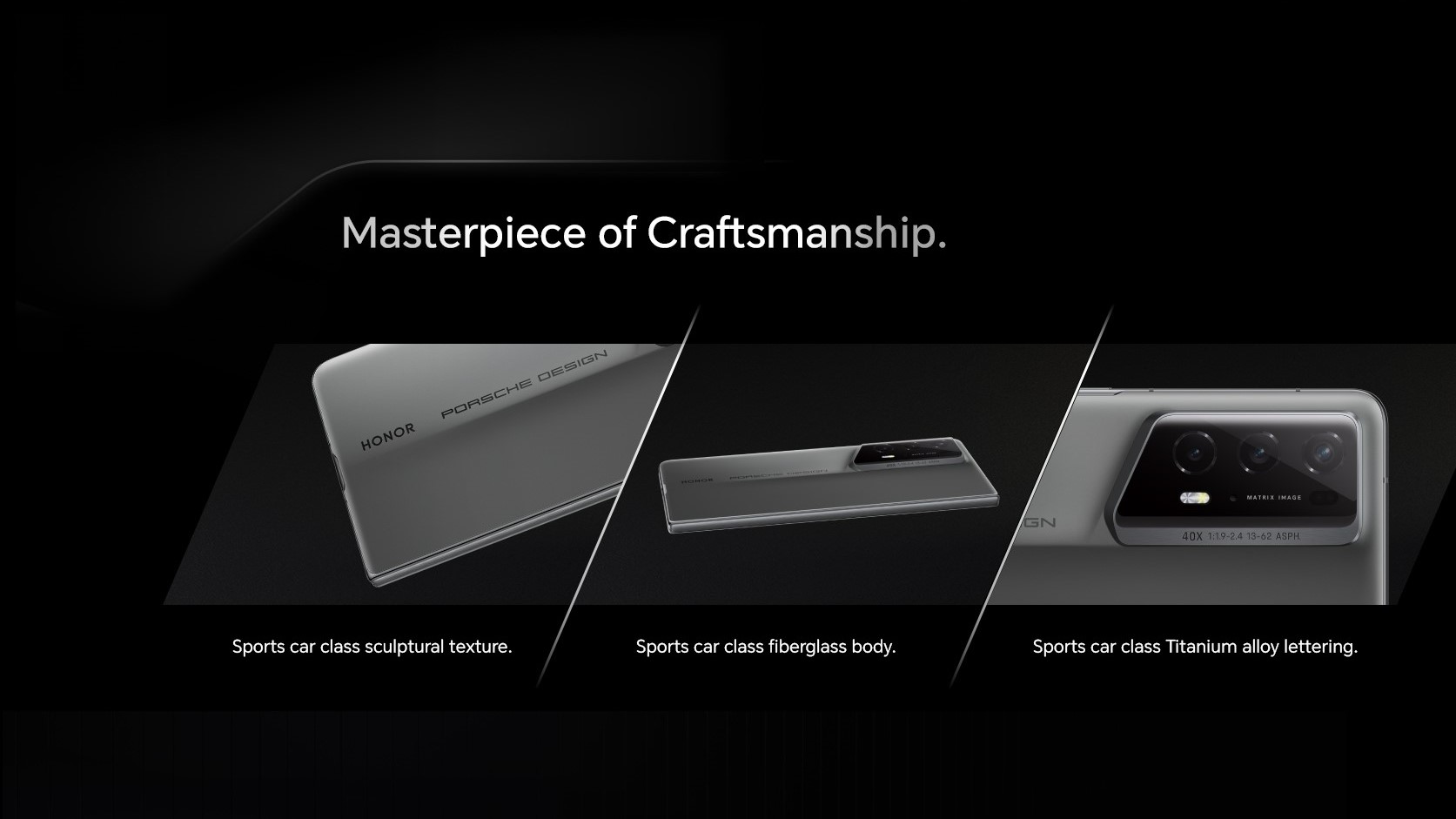
PORSCHE DESIGN HONOR Magic V2 RSR
Porsche’s new generation of high performance BEVs, led by the Taycan and the new Macan, highlight another synergy between the two industries. ‘The utilisation of silicon-based materials in lithium battery anodes shows great promise,’ says Yuan. Honor is leading innovation in battery technology, investing in the use of silicon carbon composite anodes to increase battery density and improve their performance in low temperatures. ‘We will unveil additional co-designed devices that will demonstrate Honor’s pioneering efforts in exploring cross-industry innovation.’
Porsche Design’s skills extends beyond the physical form of the new device; Monnerjan’s team also helped shape parts of the user interface. ‘The rear light of the Porsche 911 served as inspiration for the live wallpaper, while the animation on the charging screen was inspired by the Taycan, Porsche’s first fully electric sportscar,’ Monnerjan says.
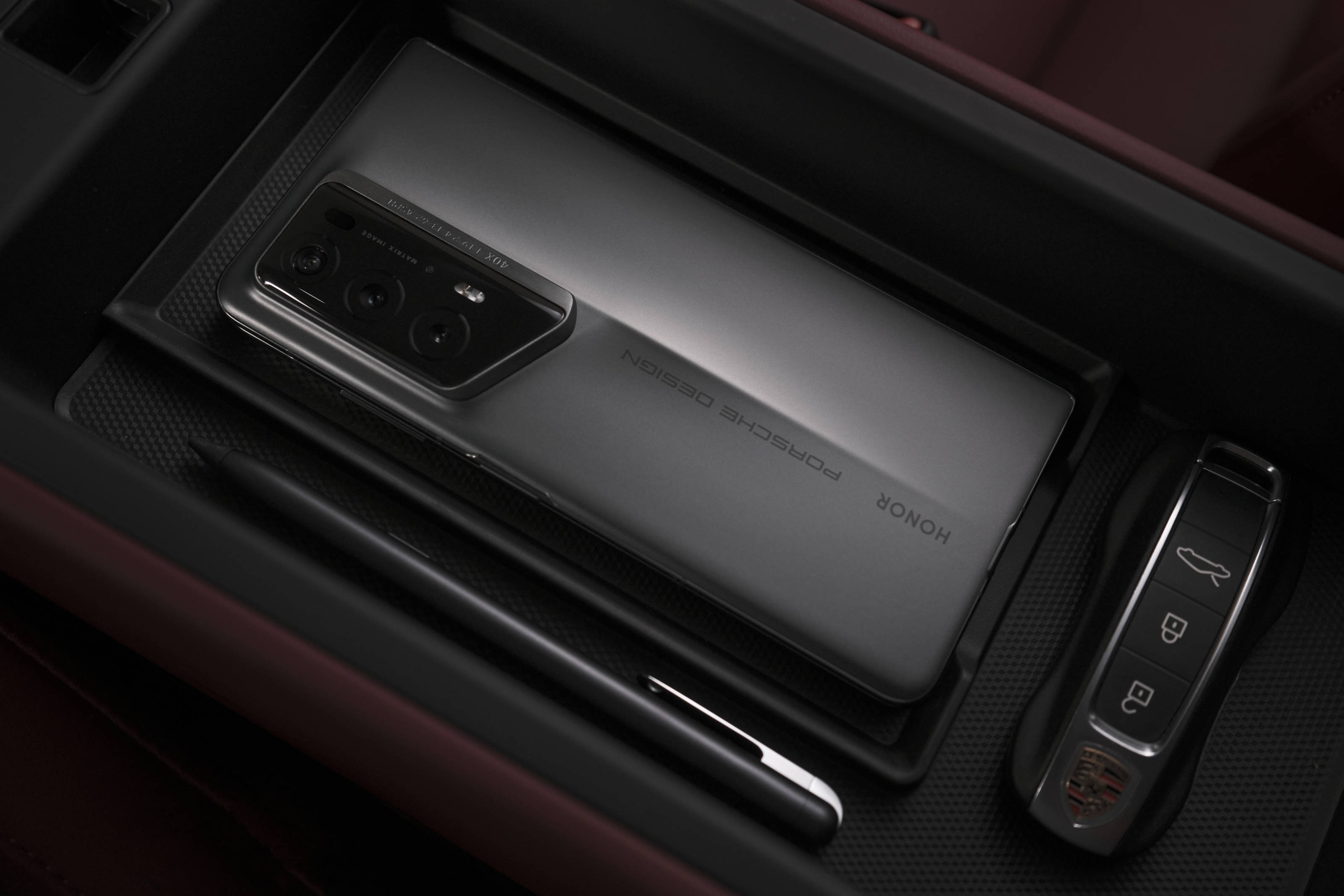
PORSCHE DESIGN HONOR Magic V2 RSR
There are other synergies between the two brands, like the ‘flyline’ on the rear of the phone that evokes the fluid lines of a 911, while the colour is Agate Grey, a familiar tone often used to emphasise the lines of Porsche’s range. ‘The flyline design is not only an iconic and timeless design, but also a manifestation of Porsche's excellent aerodynamic innovations. When this speed line is applied to the smartphone body, it not only brings a unique sense of dynamism to the phone but also conforms to the curvature of the user's grip,’ Yuan says. The Agate Grey may be joined by other colourways in Honor and Porsche Design jointly developed products. ‘More inspiration will be drawn from Porsche’s colorways and iconic design elements in our upcoming devices,’ Yuan reveals.
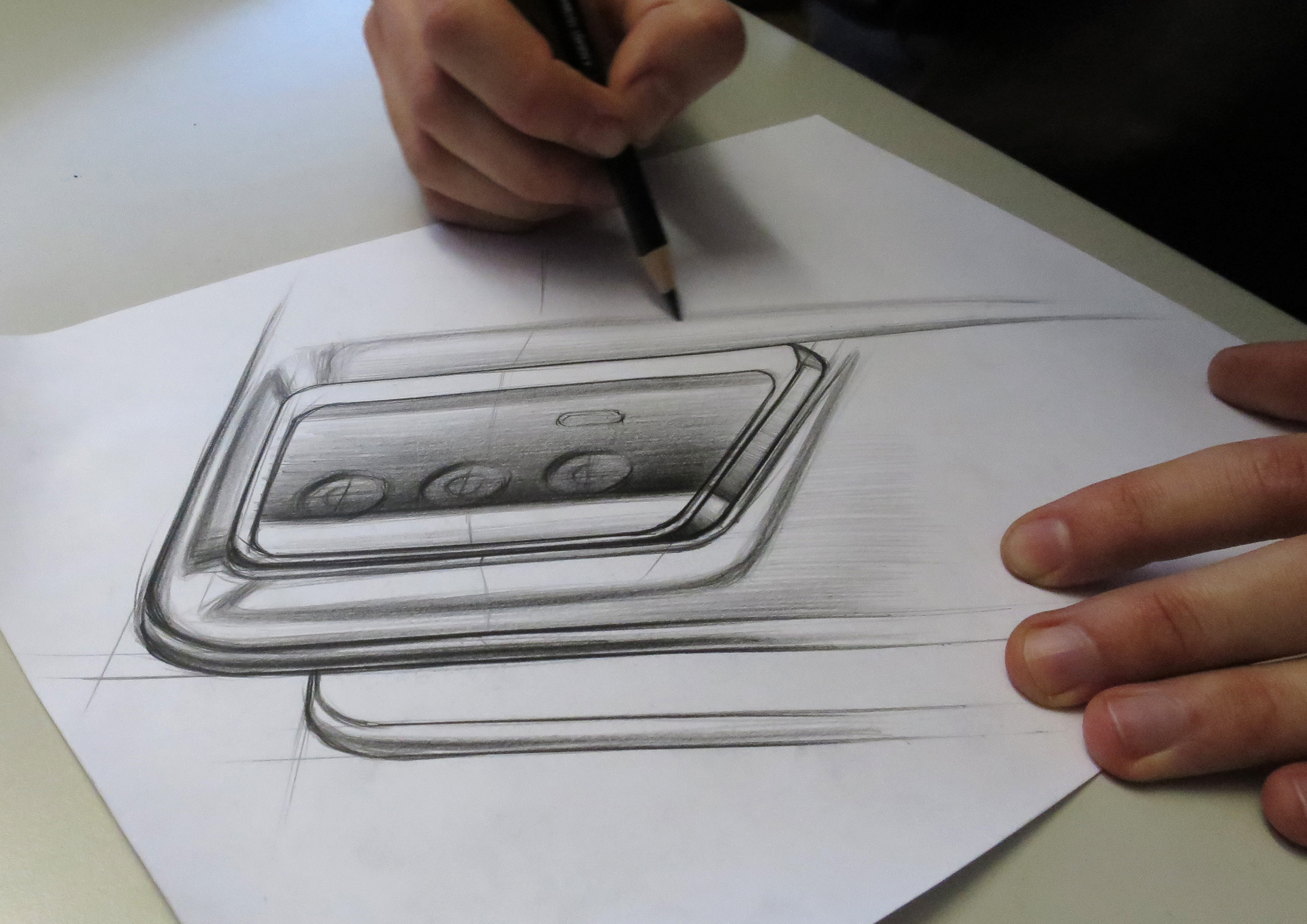
Design sketches of the PORSCHE DESIGN HONOR Magic V2 RSR, highlighting the creation of the flyline feature
‘We believe that our signature design language must always follow the beauty of the materials used,’ says Yuan. ‘We incorporated Porsche's sculptural texture on the case, and used a material called super fibreglass, originally used as a reinforcement filler for the A-pillar in Porsche 918 Spyder. Then there’s the titanium alloy – you can really feel its strength and durability. Above all, we’re always looking to create something iconic that stands out and is unique.’
The technical innovations contained within this elegant package are impressive, from the evolved chassis design that makes the folded device so thin, to the first ever Anti-scratch NanoCrystal Shield to protect the screen. ‘Of course, there are some elements that a phone has to have, like the cameras,’ says Monnerjan. ‘It’s the same with car design; a designer is given a package determined by engineers, so it has to be a collaboration of the two disciplines.’
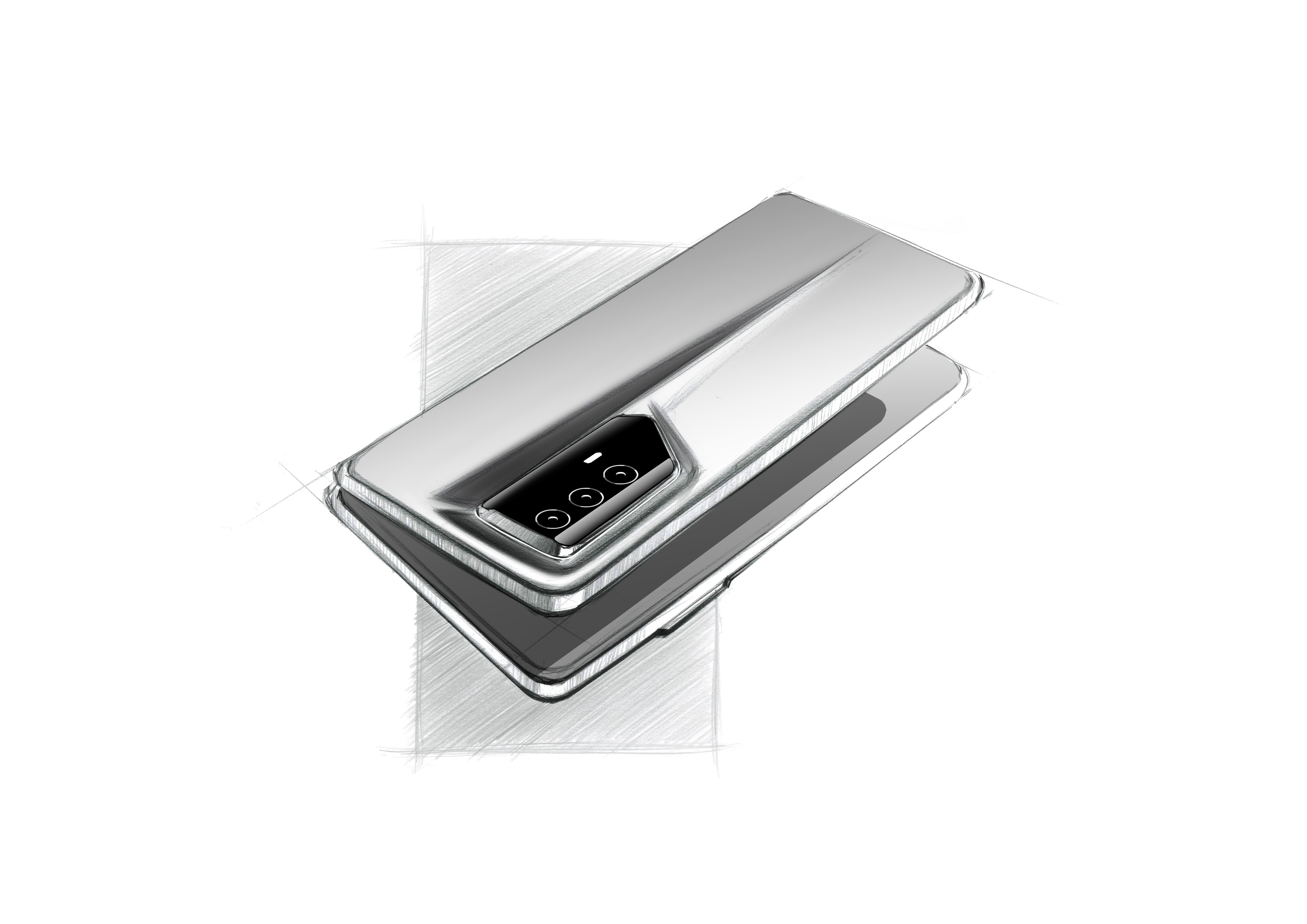
Design sketch of the PORSCHE DESIGN HONOR Magic V2 RSR
The screen itself is a foldable OLED LTPO display that supports 1.07 billion colours. Integrated dynamic dimming and a Circadian Night Display function ensure it’s always easy on the eyes. PORSCHE DESIGN HONOR Magic V2 RSR features an impressive triple rear camera system powered by the Honor Image Engine, supporting a wide range of capture modes, including Night, Zoom, and Time-lapse photography. Additionally, the phone supports 4K video on front and rear cameras and Honor’s own AI driven Motion Sensing Technology and Hover Photography.
Porsche Design Honor Magic V2 RSR
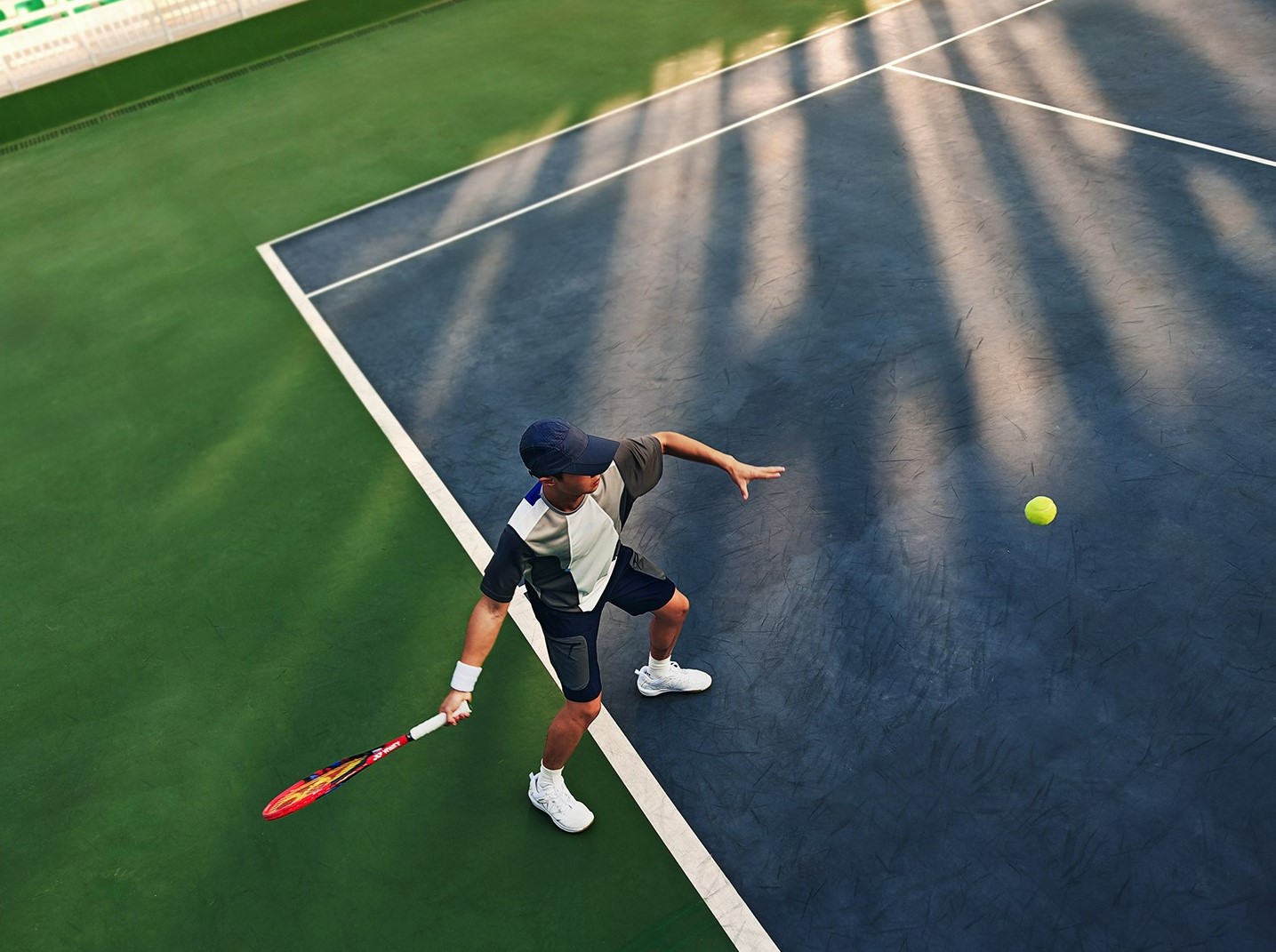
PORSCHE DESIGN HONOR Magic V2 RSR
For Monnerjan, AI is another creative tool – ‘more keys on our piano, if you like’ – not a source of new design. Nevertheless, the technology is set to have a major impact on how we use our phones, particularly in terms of search, interaction and photography. Honor’s newly launched MagicOS 8.0 incorporates an AI that drives the intent-based user interface (IUI), interpreting language, images, gestures and eye movements as well as traditional inputs.
According to Yuan, a forthcoming handset, another Honor flagship smartphone, will show the partnership is only just beginning. ‘The challenge is to keep innovating,’ Monnerjan concludes.
hihonor.com porsche-design.com
Also see the new Porsche Design Honor Magic6 RSR
Wallpaper* Newsletter
Receive our daily digest of inspiration, escapism and design stories from around the world direct to your inbox.
Jonathan Bell has written for Wallpaper* magazine since 1999, covering everything from architecture and transport design to books, tech and graphic design. He is now the magazine’s Transport and Technology Editor. Jonathan has written and edited 15 books, including Concept Car Design, 21st Century House, and The New Modern House. He is also the host of Wallpaper’s first podcast.
-
 Put these emerging artists on your radar
Put these emerging artists on your radarThis crop of six new talents is poised to shake up the art world. Get to know them now
By Tianna Williams
-
 Dining at Pyrá feels like a Mediterranean kiss on both cheeks
Dining at Pyrá feels like a Mediterranean kiss on both cheeksDesigned by House of Dré, this Lonsdale Road addition dishes up an enticing fusion of Greek and Spanish cooking
By Sofia de la Cruz
-
 Creased, crumpled: S/S 2025 menswear is about clothes that have ‘lived a life’
Creased, crumpled: S/S 2025 menswear is about clothes that have ‘lived a life’The S/S 2025 menswear collections see designers embrace the creased and the crumpled, conjuring a mood of laidback languor that ran through the season – captured here by photographer Steve Harnacke and stylist Nicola Neri for Wallpaper*
By Jack Moss